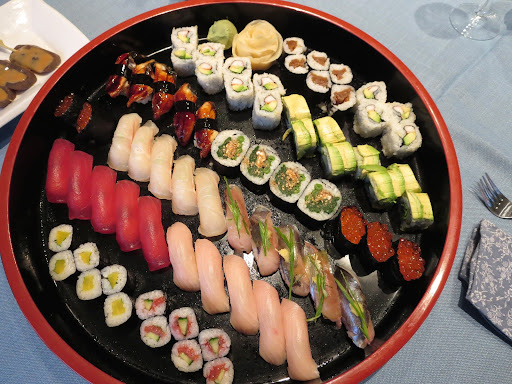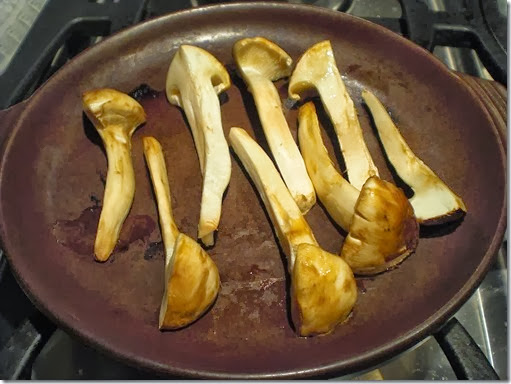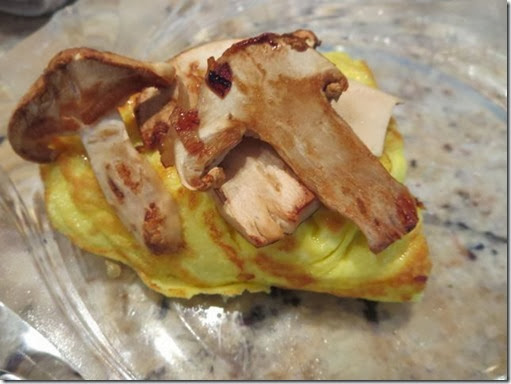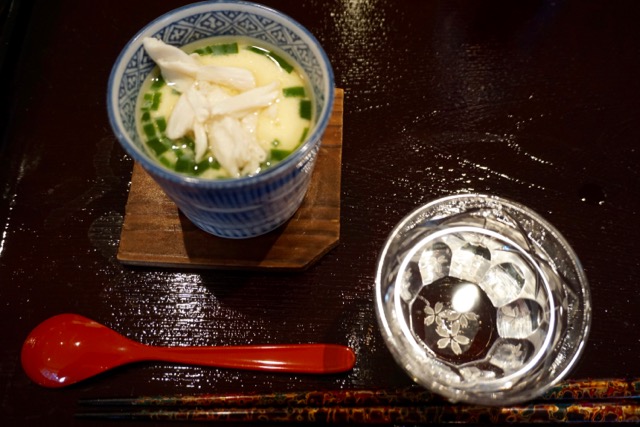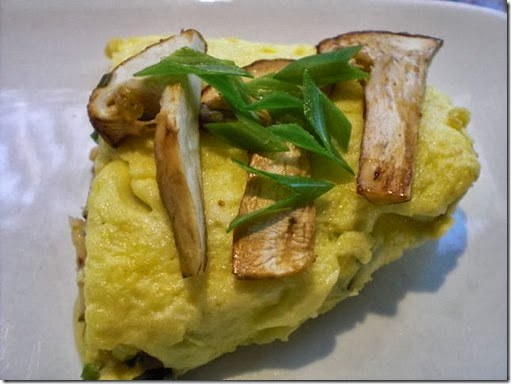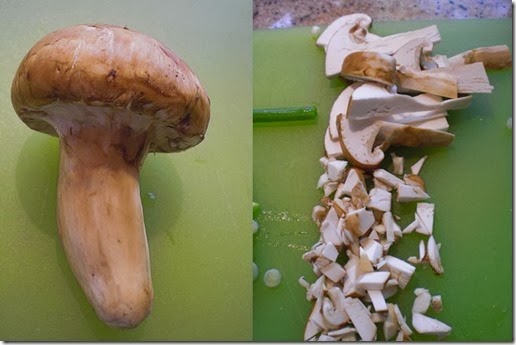Matsutake: I had two relatively large matsutake left. After I cleaned it, I sliced it.
Eggs: I used 3 large eggs. Since the size of eggs is not uniform, I measured the amount after lightly beating the eggs (this time, it was 150ml).
Broth: I made dashi broth using a dashi pack (kelp and bonito kind). The amount of liquid should be 3 times of the eggs. (In my case, the final broth should be 150ml x 3 =450 ml). I first measured about 400ml of the broth and I added light colored soy sauce or "usukuchi shouuyu" 薄口醤油 (1 tbs) and mirin (1tbs). (Taste and if the saltiness is not enough, add salt instead of soy sauce to prevent further darkening the color of the custard. I did not need it this time). I added more broth to make it exactly 3 times of the eggs (in this case, 450 ml).
Egg mixture: I mixed the broth and the eggs trying not to make too many bubbles on the surface. It is important to strain the egg mixture through a fine sieve. If not strained, Chalaza and other chunks of egg white will congeal in chawanmushi producing a very unpleasant white hard spot.
Other ingredients: Since the main feature of this chawanmushi was matsutake, I only used a few other items in this dish; ginko nuts (prepared, in a can, 5-6 in each bowl) and thinly sliced chicken tenderloin (2). After I placed the ginko nuts and the chicken meat in each bowl, I poured in the strained egg mixture. If I had it, I would have used mitsuba 三つ葉 for granish but instead, I had to settle for thinly sliced (on a slant) scallion.
Steaming: I used an electric wok. I started on medium high heat with continuos steam for 2 minutes or so and turned it down to low intermittent steam. After 5 minutes when the surface became lighter yellow and congealed, I placed sliced matsutake and scallion on the top and continued steaming for another 15-20 minutes until a clear liquid started coming or from the custard.
I have to admit the difference between using fresh shiitake mushroom (my usual) and mastutake is subtle but there is a sublime subtle aroma and flavor of matsutake. This dish is so delicate only cold sake could be our choice of libation. Over the next few days I served the remaining chawanmush cold (I could have made cold broth which can be poured over it but I did not). Even cold, it is very good.

